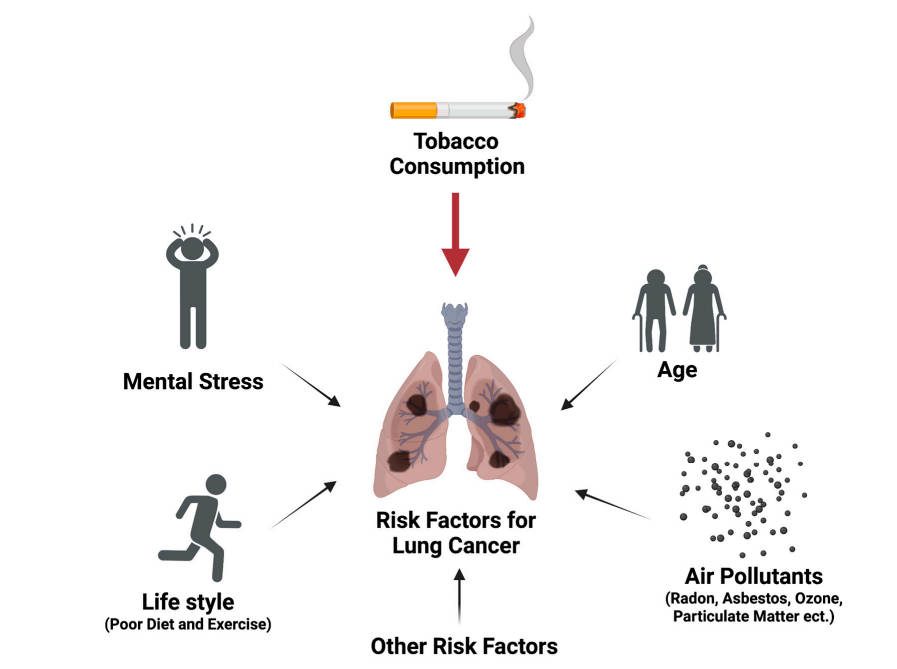With an accumulation of knowledge and expertise in the antibody field, Creative Biolabs is dedicated to offering a full range of in vitro diagnostic (IVD) antibody development services targeting different markers of lung cancer.
Lung cancer is an uncontrolled tumor in tissues of one or both lungs. This type of growth can spread beyond the lung through the process of metastasis into nearby tissue or other parts of the body. It remains a major worldwide health problem and one of the most deadly cancers for both men and women. It accounts for more than a sixth of cancer deaths. Moreover, the death rate exceeds that of colon, breast and pancreatic cancers combined. Over half of the patients diagnosed with lung cancer die within 1 year. 5-year survival is below 20%. Most cancers that arise from the lung, known as primary lung cancers, are carcinomas. The lung cancer has two main types which are small-cell lung carcinoma (SCLC) and non-small-cell lung carcinoma (NSCLC). The most common symptoms are coughing (including coughing up blood), weight loss, shortness of breath, and chest pains.
 Fig.1 Risk factors for lung cancer development.1
Fig.1 Risk factors for lung cancer development.1
Risk factors
Smoking is the number one risk factor for lung cancer. When cigarettes became the major tobacco product manufactured in the 1900s, lung cancer became more common. Increases in the number of years or the number of packs smoked per day increases the degree of risk for lung cancer. Reports have revealed that, in the United States, about 80% to 90% of lung cancers are associated with cigarette smoking. Other tobacco products including cigars or pipes also increase the risk for lung cancer. Tobacco smoke contains a mix of around 7,000 toxic chemicals, at least 70 of which cause cancer in people or animals.
Types
Basically, lung cancer is categorized into two main subtypes: small cell lung carcinoma (SCLC) and non-small-cell lung carcinoma (NSCLC). They account for 15% and 85% of all lung cancer, respectively. NSCLC could be further classified into three types: squamous-cell carcinoma, adenocarcinoma, and large-cell carcinoma. Squamous-cell carcinoma comprises 25–30% of all lung cancer cases. It results from squamous cells which form the surface of the skin lining of hollow organs in the body. This subtype of NSCLC is strongly linked with cigarette smoking.
The most common type of lung cancer is adenocarcinoma which comprises around 40% of all lung cancer. It arises from small airway epithelial, type II alveolar cells, which secrete mucus and other substances. It is worth noting that adenocarcinoma is the most common type of lung cancer in smokers and nonsmokers in men and women regardless of their age. It tends to occur in the periphery of the lung. It is postulated that the addition of filters in cigarettes prevents large particles from entering the lungs. This results in deeper inhalation of cigarette smoke, leading to peripheral lesions.
Diagnosis
Accurate tissue diagnosis is important for any individual who's got lung cancer. In patients with unresectable tumors, there' almost no need for thoracotomy. Sputum cytology may give a high yield for typically endobronchial tumors (small-cell and squamous-cell carcinoma). However, the yield is much poor for adenocarcinomas. Overall, the yield is probably less than 50% due to the changing histological patterns. Fibreoptic bronchoscopy gives a very high rate of diagnosis in excess of 90%, when tumor is visualized endobronchially. This data is obtained from a combination of washings, brushings, and direct biopsy. For tumors that are not visualised, the yield for washing and brushing is around 75% in central lesions and 55% in peripheral lesions, respectively. The yield in small-cell and squamous cell carcinoma is higher than that in adenocarcinoma and large-cell carcinoma.
Common Management and Treatment
- Surgery
If NSCLC is confirmed, the stage is evaluated, determining whether the disease is localized and amenable to surgery or it has spread to the point where it cannot be cured surgically. Patients who have stage Ⅰ, Ⅱ, and ⅢA NSCLC typically have surgery to remove the tumor if the tumor is found to be resectable and the patient is able to tolerate surgery.
- Radiotherapy
Radiotherapy could be used to treat patients with NSCLC who are not eligible for surgery. Radiotherapy destroys DNA within cancer cells by using high-energy beams, thereby destroying them. This therapy is helpful in controlling or eliminating tumors at specific sites in the body. For those patients with NSCLC that is localized to the chest and who are not candidates for surgical resection may benefit, radiotherapy may be a good option.
- Chemotherapy
Approximately 40% of newly diagnosed lung cancer patients are stage IV. For these patients, improving survival and reducing disease-related adverse events is the goal. As for stage IV NSCLC, cytotoxic combination chemotherapy is the first-line therapy, which might be influenced by histology, age, comorbidity, and performance status.
With our versatile IVD platform, Creative Biolabs providers high-quality antibody development services targeting different diagnostic markers of lung cancer, from scratch to commercial IVD kits (we can also start with provided antibody candidates). Please feel free to contact us for more information and a formal quote.
Our services target the following biomarkers for lung cancer diagnosis:
Reference
- Freeman, Breanne, et al. "Opportunities and challenges of kava in lung cancer prevention." International journal of molecular sciences 24.11 (2023): 9539. Distributed under Open Access license CC BY 4.0, without modification.
For Research Use Only.

